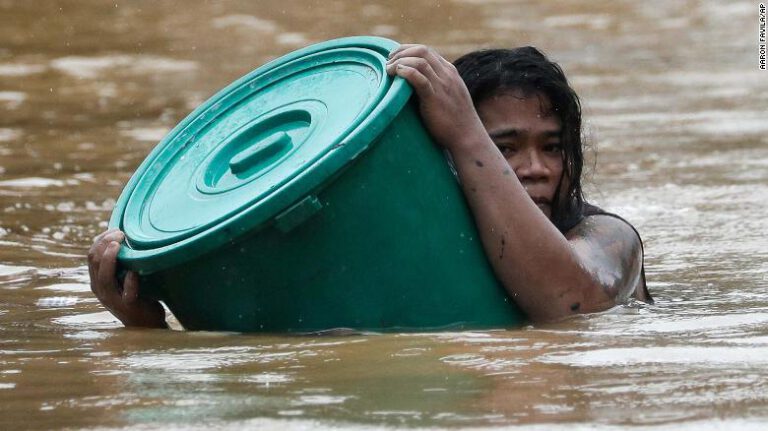
By: Krixia Subingsubing – Reporter / @KrixiasINQ, Philippine Daily Inquirer /November 20, 2020
An allocation of P1 billion for the next three years could help build 120 permanent evacuation centers, according to disaster risk experts who are crafting a disaster response framework to help minimize typhoon deaths.
In the aftermath of the destruction wrought by Typhoon “Ulysses” (international name: Vamco) last week, the UP Resilience Institute (UPRI) and private organization Agap Banta called on the government to start investing in safer evacuation centers.
This follows President Duterte’s own directive to Congress to prioritize funding for evacuation centers given the increasing frequency and severity of typhoons passing through the Philippines.
‘Not entirely fit’
The two groups agree that not all city governments have well-built evacuation sites.
Out of the 270 municipalities in vulnerable provinces identified under the Climate Change Adaptation Disaster Risk Reduction Cluster, more than two-thirds still do not have permanent sites.
Of these, 96 belong to fourth- to sixth-income class municipalities, they noted.
Most still used schools, gyms and government halls to shelter displaced typhoon survivors.
“But reports show that [these] are not entirely fit to ensure the safety of evacuees, especially at this time when we have to enforce physical distancing and minimum health standards to curb the ongoing COVID-19 pandemic,” the experts said.
‘Guidelines’
They urged Congress to channel at least P1 billion yearly for the next three years to cover as many as 120 permanent evacuation sites in highly vulnerable local government units (LGUs).
By Agap Banta’s estimate, these sites can accommodate about 13,500 families or 67,500 displaced individuals.
“We reiterate our call to congressional leaders to fund a National Evacuation Center Investment Program starting with the 2021 budget, which will target highly vulnerable LGUs affected by the typhoons,” the experts said.
They added that “the budget should be governed by guidelines to include audit, standards, validation, construction and/or upgrading of evacuation centers, given our intersecting challenges with COVID-19.”
UPRI research director Kristoffer Berse also called for a review of the location of evacuation centers nationwide, to take into account “the impacts of climate change and the cascading effects of multiple hazards, including epidemics.”Doing so would not only help displaced families but also reduce vulnerabilities to Covid-19 contagion, they said.#